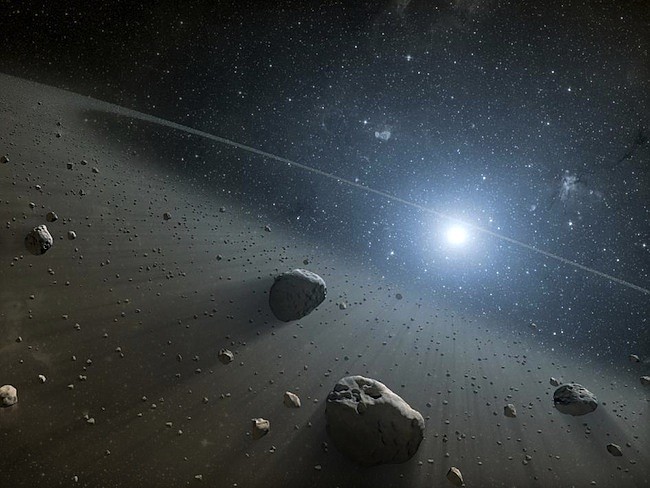- December 17, 2025
-
-
Loading

Loading

An asteroid measuring nearly a mile in diameter flies toward Earth after wandering through space for thousands of years. An impact seems imminent – or so some think.
Earth launches a nuclear missile toward the massive piece of space rock, slicing through the atmosphere and breaching into outer space. Just as the missile approaches the asteroid and crosses into its line of fire, it detonates. The radiation from the explosion vaporizes the top layer of the asteroid into space dust and exerts a force so strong that it sends the rock flying in the opposite direction.
The mission succeeded. Disaster averted.
Researchers and professors like Dr. Dan Britt of the University of Central Florida understand that deflections of that magnitude come from tireless research of an asteroid’s composition – an area of study that UCF plans to explore even further.
NASA awarded UCF a grant for $6 million earlier this month to kick start its future Center for Lunar and Asteroid Surface Science, a collaboration of researchers from around the globe led by UCF that will focus on asteroid and moon exploration.
The group of researchers will be led by Britt, a physics and planetary science professor and former chairman of the Division for Planetary Sciences of the American Astronomical Society.
“It’s going to expand what we’re already doing in Central Florida and make it truly an international center for research and exploration for asteroids and moons,” Britt said. “It will allow us to work more closely with some of the best people in the world.”
It’s important to understand how a giant moving rock in space works before sending any kind of spacecraft, Britt said.
“The way you reduce risk, explore smarter and reduce costs is you get as much scientific background as you can before you design your hardware and bring in your engineers,” Britt said.
“That’s what we’re going to do is try to explore NASA’s exploration goals with smart science.”
The 45 researchers are a taking on a variety of projects related to asteroids, tackling different facets of the space rocks like composition, temperature, and the frequency that they enter Earth’s atmosphere.
Some UCF research focuses on extracting resources from asteroids, which contain carbon. This element could potentially be extracted from the rock and burned down into fuel and water, turning asteroids into gas stations along expeditions to Mars and beyond.
“Something like that has 12 percent water and 5 percent carbon,” said Britt, emptying out a pebble-sized meteorite from a plastic bag onto his desk. “You could cook off a lot of useful stuff out of there, because carbon is what you drive your car on.”
But sending an astronaut or spacecraft onto an asteroid isn’t as simple as it may sound, Britt said. Many asteroids are a collection of rubble held together by a gravitational pull, like a sandbar in space.
Britt’s research focuses on asteroid composition and how the weathering of asteroids over time changes the surfaces an astronaut encounters.
“You’re not so much as standing on something as formation flying with it,” Britt said. “How exactly does that work when you’re dealing with what you think is a solid surface?”
Co-investigator and UCF Physics and Astronomy Professor Humberto Campins’ research focuses on comparing the composition of flying asteroids with other asteroids tucked away in the asteroid belt to better understand where they’re coming from, information that could help Earth prepare for an incoming asteroid.
Campins said he’s pleased to have UCF recognized by NASA with the $6 million grant.
“It’s an indication that we’re doing well, that we’re competing at a national and international level,” Campins said.
The continued grants from NASA put UCF on a pedestal as having one of the top planetary science departments in the country. Earlier this year, the university received a $55 million grant to develop and launch a device that photographs the earth’s atmosphere, as well as a $1.8 million grant to study the mental stress levels of astronauts.
UCF graduate student Tracy Becker saw the NASA grant not only as an opportunity for asteroid and moon research, but for any area within UCF’s planetary science program.
“It means we should hopefully be hiring new faculty in the department, which enables more classes to be taught from new perspectives,” said Becker, who studies Saturn’s rings. “Depending on who they hire, maybe they will offer a course that was not otherwise available just because of the expertise of different astronomers.”
“It means that the university, specifically the planetary science program, is about to improve and become a big thing in the community…This will really put us on the map and people will recognize UCF as a stronghold in studying planetary science.”